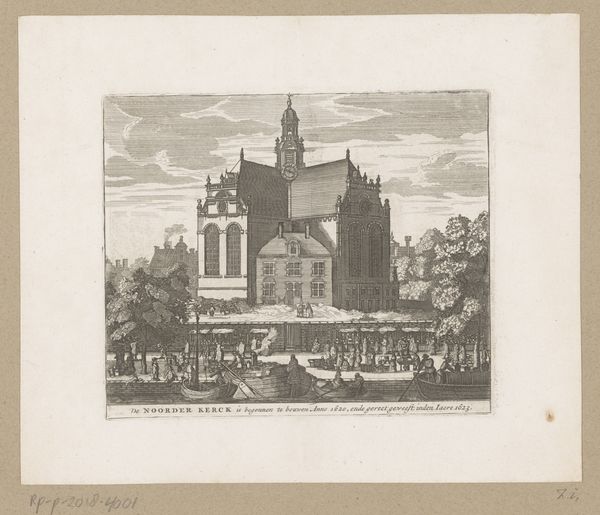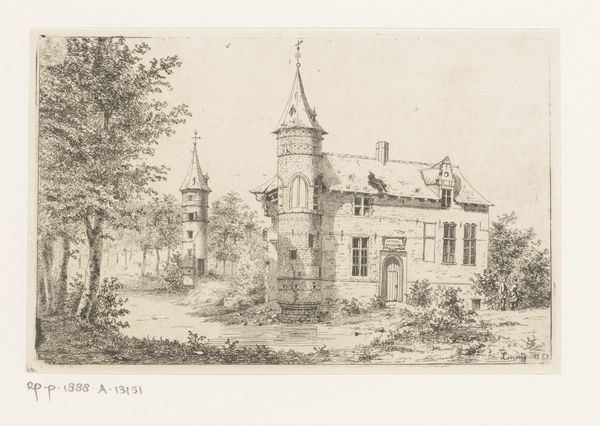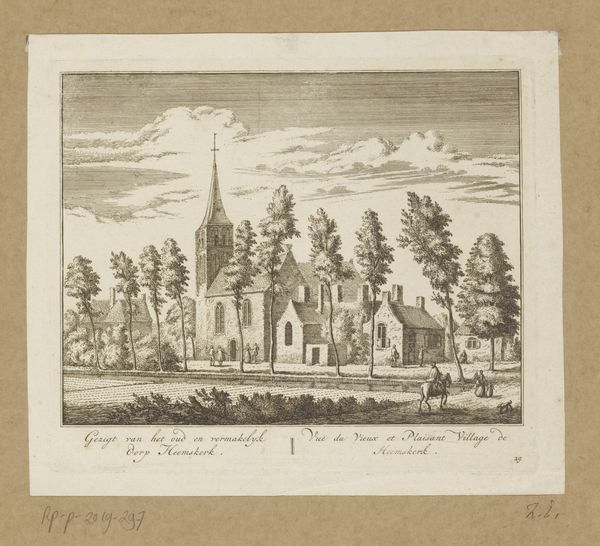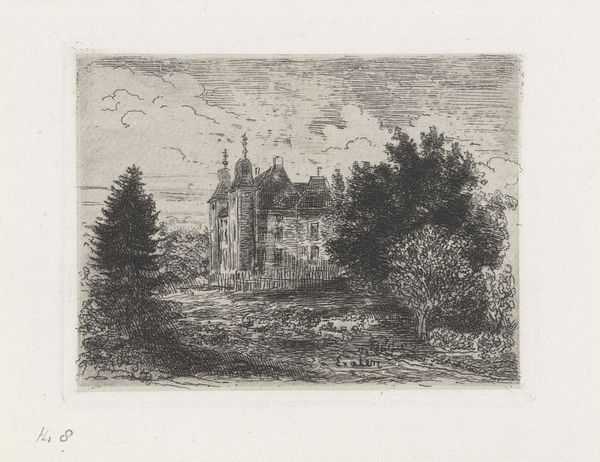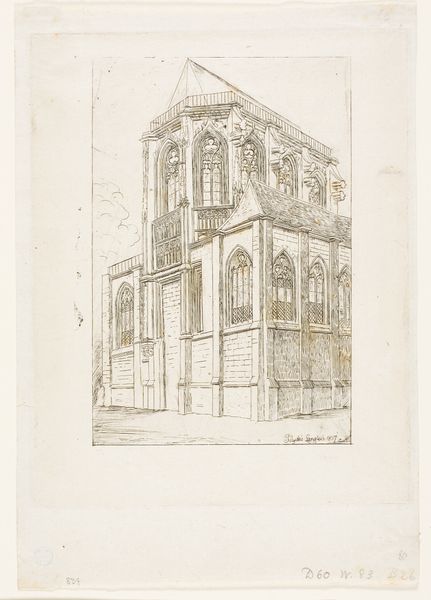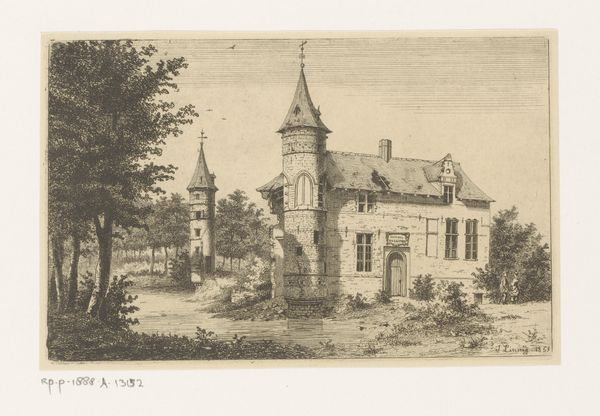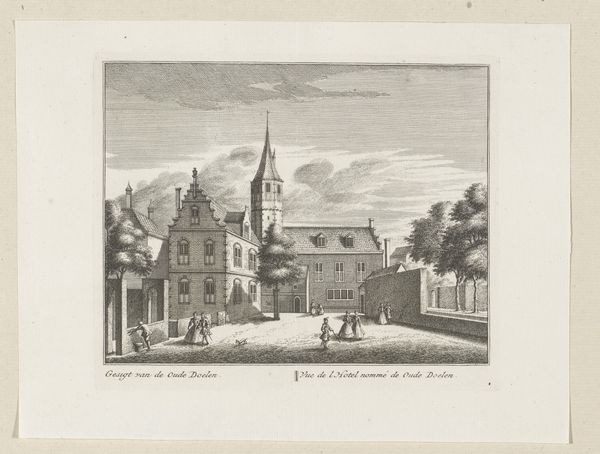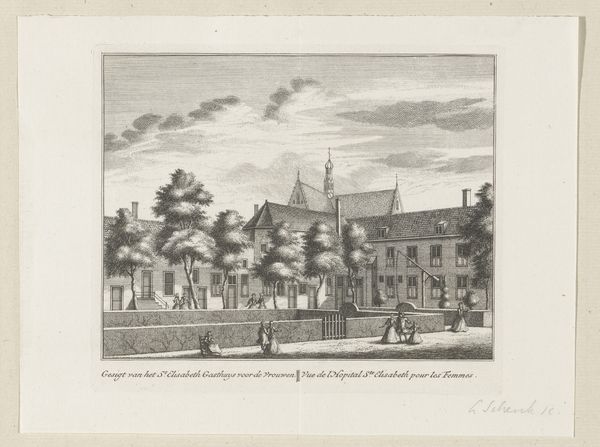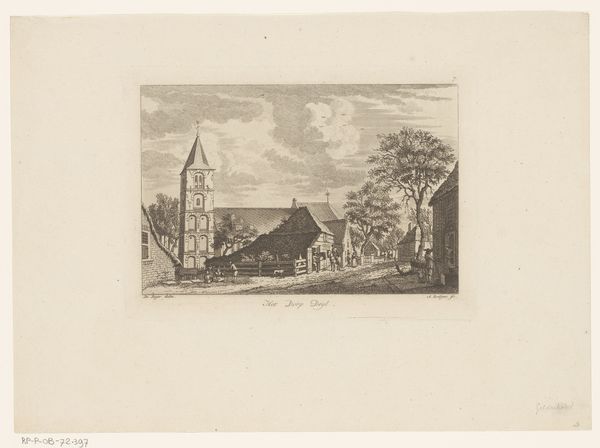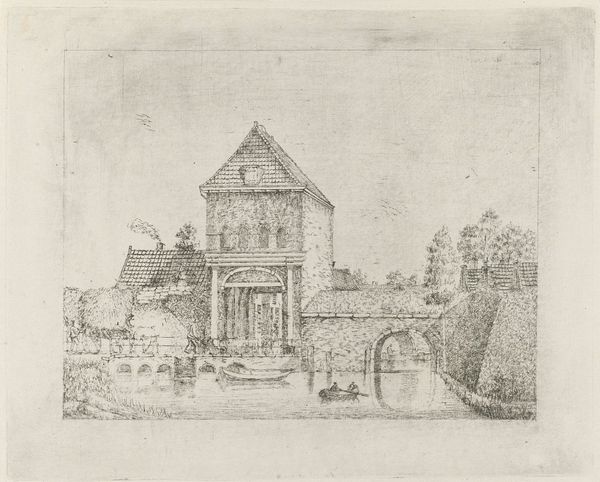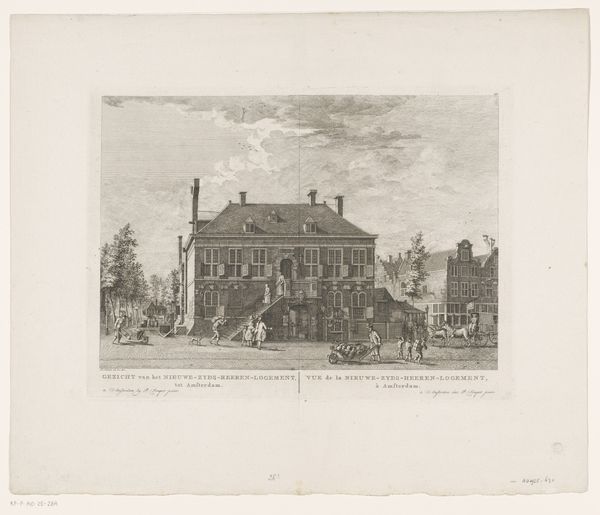
Dimensions: height 140 mm, width 189 mm
Copyright: Rijks Museum: Open Domain
Curator: This print exudes a quiet stillness; the soft tones and detailed linework create a really tranquil scene. Editor: That’s right. This is an etching titled "Gezicht op Trompenburgh," dating back to 1896. Its creator was jonkheer Barthold Willem Floris van Riemsdijk, and the Rijksmuseum now holds this remarkable work. Curator: As an etching, the work intrigues me, thinking about the manual labor it entails, biting the metal plate, wiping the ink… each print is a collaborative effort between the artist and the materials. And how accessible was printmaking to someone of Riemsdijk's social standing at this time? Editor: An interesting point to ponder, but consider too the place itself—Trompenburgh, with its baroque architecture reflecting in the still waters. This estate tells a tale of ambition, power, and status during that era. Remember, these landscapes served as deliberate representations, shaping how wealth and influence were perceived by the public. Curator: The composition, particularly how the water nearly consumes the base of the building… does that detail intend to subtly erode the status represented, hinting at material instability even amidst displays of baroque grandeur? Editor: Possibly. Or it simply presents nature’s power alongside human aspiration. Also, given van Riemsdijk’s role in the Rijksmuseum—he was the director, remember—his choice to depict Trompenburgh could symbolize his awareness of artistic legacies and how landscapes are constructed, both literally and ideologically, in national collections. Curator: His position would absolutely grant him access to both techniques and materials! Still, it's worth exploring the chain of production beyond the "artist's hand" here, as labor is what allowed the wealth required for structures like this estate in the first place. Editor: Yes, let’s consider this further, especially Riemsdijk's motivations behind portraying this architecture through his unique social and institutional perspective. Curator: Agreed. Reflecting on the piece, I see an intersection of craftsmanship and social display captured so expertly, leading one to question underlying structures. Editor: And I’m left contemplating the layered contexts embedded in landscape art like this – its power to shape our understanding of culture and society over time.
Comments
No comments
Be the first to comment and join the conversation on the ultimate creative platform.

